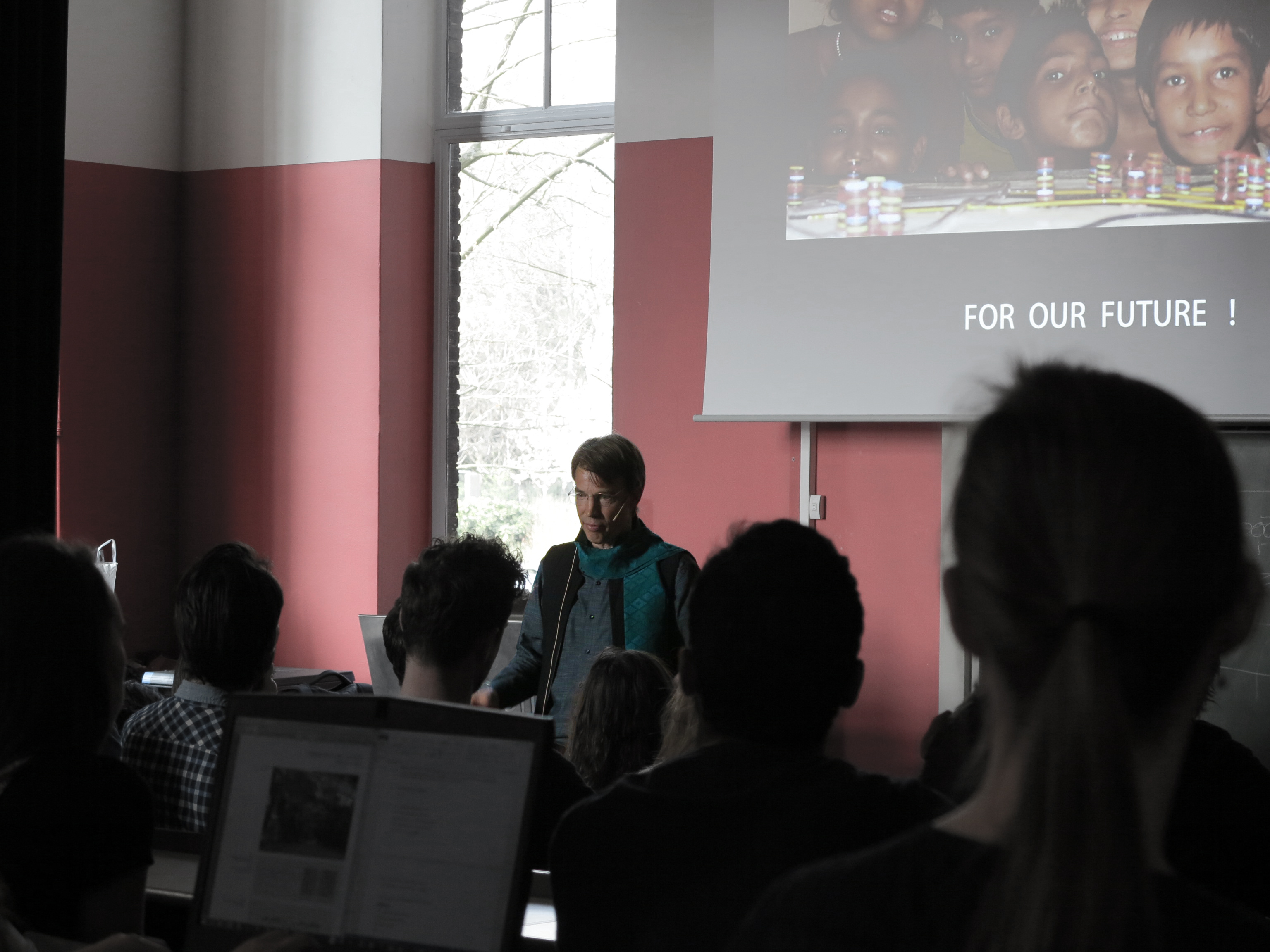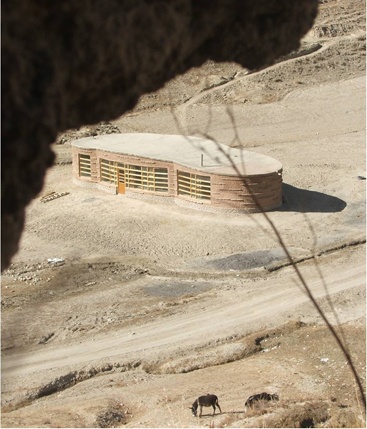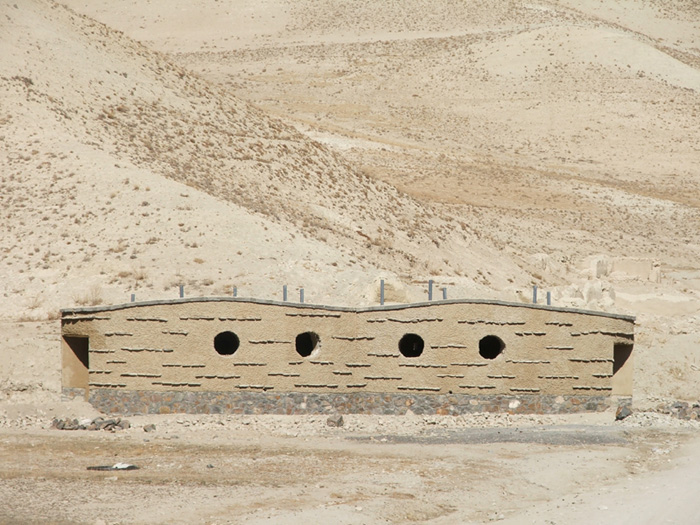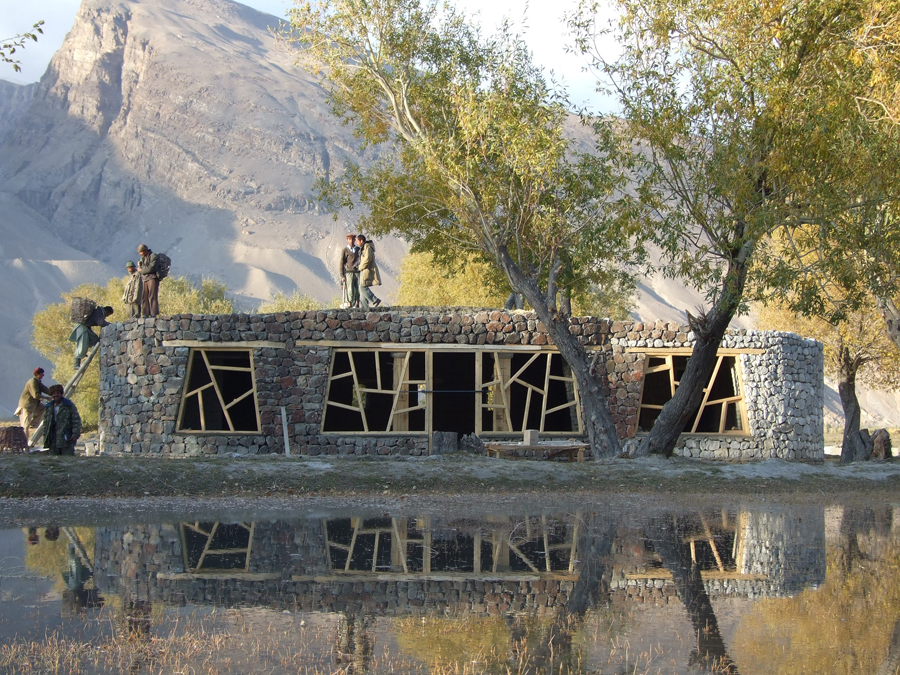#GC2022 is accepting submissions - 25d 27h 05m 44s
Initiated by explore-lab student Davoud Sultani and introduced by Dick van Gameren, "slow” architect Anne Feenstra gave an inspiring lecture at the Faculty of Architecture, TU Delft. “Salam aleikum, namasté, welcome”. In barely 50 minutes Feenstra took us to various places in Afghanistan and India. Next to his process of designing, cooperating and educating, he explained how he works in different cultures and the importance of locality. Feenstra’s main message: take your time...
Take a little time to listen, to design, to figure out solutions. Take your time to research and to establish a good collaboration. Take your time to search for the right materials and to work together with a local carpenter, to explain to people what you are trying to do and to get to know each other.
Feenstra started his lecture with a project in North East Afhanistan, ‘Dancing Windows’; a small community centre for the second national park in Afghanistan. Instead of explaining the architectural qualities of the building, he first explains the climate of the remote region with its extreme temperatures and the hierarchy and structures of the local community. He shows theyaks and the natural context and in what type of houses the families live. From here we can start to search for solutions: for example the thickness of the walls, the use of the local clay for adobe bricks or the placement of large and small windows for passive heating.
Locality is an important part of Feenstra’s work. For the maternity homes in Afghanistan, commissioned by UNICEF and the Min. of Public Health, his proposition was to develop a new typology based on the country’s (cultural) needs. Besides sustainable technical design solutions like the use of passive heating and the use of local materials, the cultural aspect of these wards are of essential importance. Feenstra explains how in a large part of the world, men are for example allowed to watch the baby being born. In Afghanistan this is absolutely not the case. The privacy for the women is very important. While showing design solutions for windows that still allow for privacy, or recommendations as he likes to call them, “solutions is maybe a bit pretentious”, he explains the subtle ‘buffer space’ that separates the men from women and the thoughtful private courtyard, which the women wished for.

Design is one thing, but if you really want to get your design built it is veryimportant to spend time with the contractor. “UNICEF called me and said that we had a big problem.” The bidding prices of builders were too low. They had never seen this before. This is because Feenstra spent time on the local markets together with the local contractor to find the right materials. Instead of four maternity homes, they were able to build five on the same budget.
“Quantity is not the problem, in India the entire Dutch road system is built every year, but how can we put, with all this pressure, a little bit more time on quality?”


Architect Anne Feenstra has been educated in Delft. Before leaving for Afghanistan, Feenstra worked as an architect at the office of among others Will Alsop. In 2003 he established his studio, AFIR Architects, with offices in Kabul and Khulm in the north. He taught architecture at the University of Kabul pro bono and the School of Planning and Architecture in New Delhi. In the Indian capital he established Arch-I, a platform for architecture and urban planning. He has also been lecturing in Nepal, UK, Afghanistan, Germany,
Incia, Brazil, Kenya, France, Rwanda and the Netherlands. Feenstra became dean of the Faculty of Architecture of the CEPT University in Ahmedabad, India this year, to which Van Gameren ‘coincidentally’ paid a visit earlier this year.
This article is also published in Pantheon/ issue// In Development. All photos © Anne Feenstra